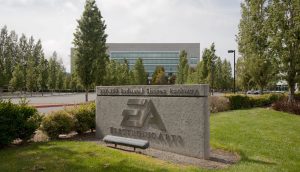Curious as to who the mediaverse’s new thinkers are, and what they’re doing, we canvassed the industry last summer for the top young talent and discovered 10 who had been instrumental in some very breakthrough work. Our ‘Rising Young Media Stars’ series profiled them in strategy and in Media in Canada. Now shops continue to single out their rising stars for us, so the series continues. And we’re still scouting for more of the same – so drop us a few lines about the innovators in your shop.
Who: Nick Fairbairn, media engagement strategist, GJP Advertising (based in San Francisco but also works for Cincinnati and Toronto HQ)
Claim to fame: Getting the Ontario Toyota Dealers Association to add online to their media mix. There’s a lot of automotive activity on the Net, but it comes from the manufacturing rather than retail sector of the industry. The two-month integrated dealers campaign was built around the client’s Red Tag Sale with broadcast and print ads in addition to online.
Rather than simply purchase auto research sites, Fairbairn researched the online behaviour of the target – Ontarians seeking to purchase a new car within 30 days. That resulted in ads on sites such as Yahoo Mail and a sponsorship/buyout strategy involving: sponsorship of the Driving Spotlight on driving.ca; the Camry as the Featured Car of the Month on canadiandriver.com; and sponsorship of the New Car Finder within wheels.com. A microsite was built to profile the cars with an interactive 360-degree view and model details, as well as features such as a dealer locator and downloadable pdf Red Tag that purchasers could take into the dealer locations.
In addition to greatly exceeding sales goals, Fairbairn was able to report the online results to the OTDA, including a 30% clickthrough rate (Jupiter Research pegs the average CTR for online display ads at 6%). And over 1,000 people downloaded the Red Tag and took it to their Toyota dealer.
Background: Fairbairn started in the business with an internship at Mediaedge:cia while attending San Francisco State University. After graduation, he began his career in earnest with a one-year stint as media assistant at OMD in San Francisco buying radio and TV for clients such as Visa, Wells Fargo and ABC Family. With just 18 months experience under his belt, Fairbairn joined Toronto-HQ’d GJP Advertising’s San Francisco office in a junior position. Since signing on just over two years ago, he’s worked his way up to his current position, with responsibility for the agency’s traditional and online media in Canada and the US, which includes an office in Cincinnati. The job involves planning and strategy on all of the agency’s media clients and buying for about 70% of them.
What new media destination should everyone check out? At first, I thought I should talk about networking, webinars, UGC, but honestly – my favourite new marketing initiative is a co-branded web and broadcast campaign. The elements are Internet and broadcast but no 30-second spots are actually included. For example, a deal on a local level with a national to tie a client to the NFL and the broadcast networks, ‘The NFL on NBC brought to you by (client). Check out NBC 11 local website and see (client) in the NFL section.’ You don’t pay much at all but it makes the brand look tied to a national brand.
Who’s getting it right? A campaign that really resonates with me is Crispin Porter’s creative for Volkswagen. People driving in their cars having normal conversations and all of sudden, wham, there’s a big accident. It startles you in a big way. What they’re selling is safety. Nothing has hammered that point across in an engaging way like these guys have done this year.
Which brand, other than your own clients, would you most want to work on? I would say Apple. Creativity with Apple and iPod seems to be embraced. Creativity and different media opportunities like subway takeovers. But if you asked me for best business practices, I would say Vonage, because they’ve got an endless budget and I love not being restricted and being able to really play with media. They’ve got a great price story in terms of direct response. Everything is trackable to a certain extent, there’s a lot of money to spend, and a great value offer to drive acquisition. Their commercials drive me crazy, but they’re resonating.
What would you do with your dream project for Apple? I would take the broadcast frequency down and make it more effective. I would see where the money should be spent more effectively, create guerrilla street marketing efforts, buy out storefronts in certain cities, buy out the outside of buildings in urban areas, hire professional graffiti artists to graffiti the brand on building sides, with integrated national cable, TV, print and online with the base being a microsite – one cohesive campaign. I’d also want to get back to that van wrap idea, and maybe even get creative with those graffiti artists on the van.
Are opportunities being missed due to caution? Yes. Branding online is being missed due to caution, and UGC (user-generated content) is being missed. I would say: advertisers wake up, you can brand online. Everyone is online, even the 40-plus crowd. It’s a fantastic, accountable medium. But when you get too engulfed in tracking ROI, you lose opportunities. If there’s a video player on any sites, you can buy out the first 15 seconds and force people to watch it. Things like content sponsorship and sponsoring a website for the day. You’ve got great reach and mass impact, but advertisers are nervous because it’s not accountable – you can’t get any ROI out of it, no hard data.
With UGC, brands are nervous to be around content they can’t control. Yes, there could be negative talk about a brand, but the audience there is very receptive.
What common industry belief would you love to whack? I have three, the first being that online is the answer. Online is not the answer, but online is definitely a major player.
Next, I would say search is key. Where we’re finding problems is when we look at the actual quality of the leads from search and banners. Search might have double the leads, but it’s only converting about 5% to be actual leads. You need to assess that as you would any medium.
Lastly, agencies that are trying to ramp up their online capabilities saying, ‘we need an online buyer.” There’s no such thing as an online buyer. There’s a planner that specializes in online. It’s all one and we’re creating ideas and deals as we go.























